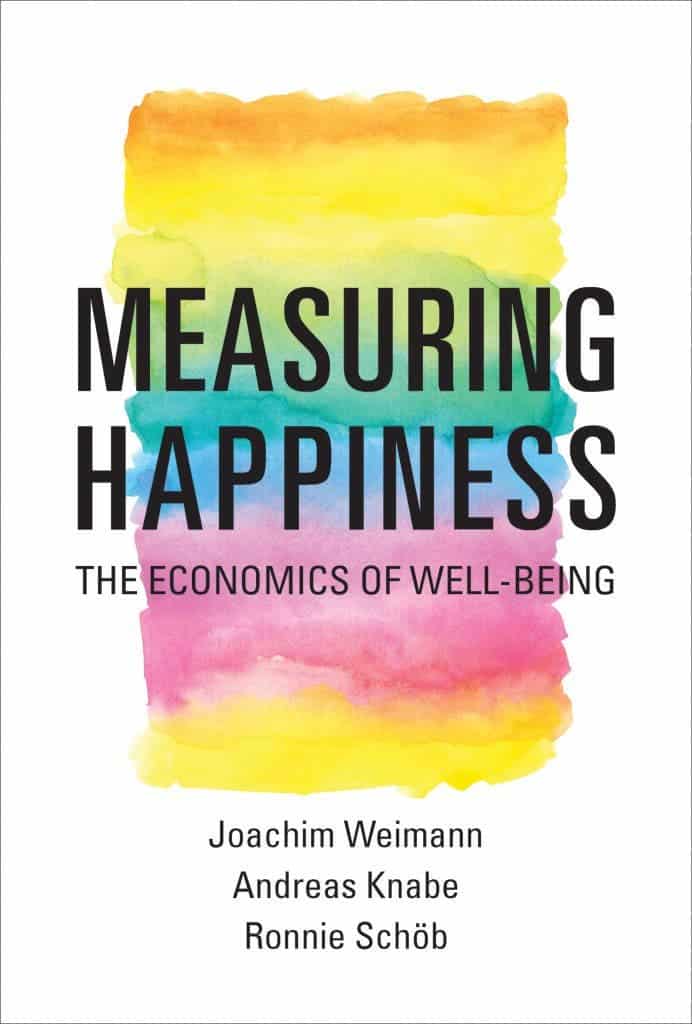“Measuring Happiness”
By Joachim Weimann, Andreas Knabe, Ronnie Schob
MIT Press, 224pp | Buy on Amazon
What is happiness, and how does money relate to it? Is more really better? Then why aren’t richer people happier? But why are poor people generally less happy? The economics of happiness is an extremely controversial field, without any definitive answers; however, the authors to a fantastic job at summarizing the fundamental problems around these issues, while giving a new perspective of how money and happiness really interact.
Money doesn’t buy happiness – money buys you the possibility to be happy. For example, the authors explain in the book, think about going to the supermarket for your weekly shopping. You go and you buy your favorite products, the things you need, and maybe a little extra. You generally buy the same things week after week, and you’re perfectly fine with that. But what if instead of going to the supermarket, you’d go to a small shop that only sold the products you want to buy? The products would be the same, but you wouldn’t have the possibility to choose, and that would make you less happy. Why does that happen?
As it turns out, one of the key reasons why we’re happy is because we can choose; and money does just that – it gives us the possibility to choose what we want to do. We can drink the brand of soda we want, we can choose between several explanations for our vacation and you have a relative financial security – so in a way, money does buy happiness… but only up to a point. People with really a lot of money tend to be less and less happy the more they have, so the correlation between money and happiness is positive only up to a point, and then becomes negative. But our frame of reference constantly changes, and that makes things even more complicated. They write:
“There is a weakly positive relationship between income and positive feelings of the previous day. So, although income has a measureable influence on people’s feelings, it is rather slight. How we are doing on an emotional level depends more on other things than on income.”
Research has shown that materialistic people tend to be less happy, because they want things, and if they get them, they want other things. Basically, they want to want things, and that makes it impossible to be truly happy. But then again something as simple as someone smiling or complimenting you can change your entire day and make you feel really good… so is happiness in the small things, or in the big things?
Those are just a few of the topics discussed in this book – there are many, many more interesting and surprising points the authors make. They tackle the famous “Easterlin paradox” (why people’s incomes and happiness are not related), why we shouldn’t use a happiness scale, and how well being is not the same as happiness. I won’t spoil anything more, but I’ll just say that I found myself fascinated by some of the concepts they discuss.
This book should be interesting for everybody, not just for people interested in economics. I’d dare say that anyone who wants to learn more about happiness at a general level should read it – regardless of your knowledge and skillset. This is definitely a book you don’t want to miss out on!







